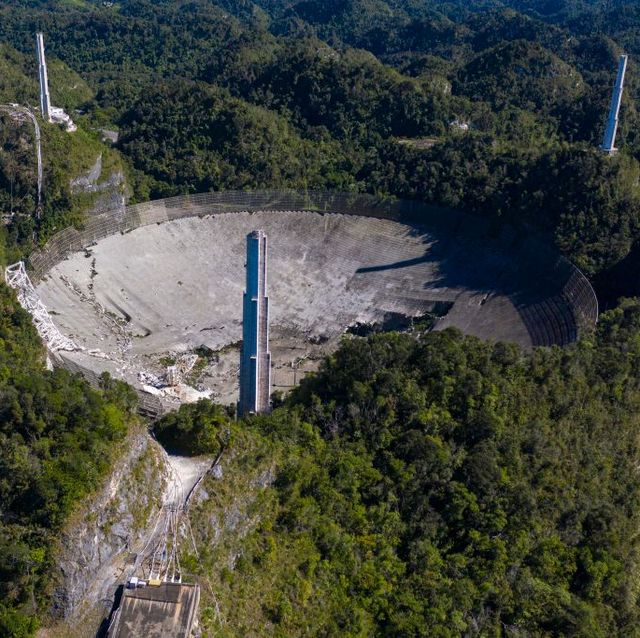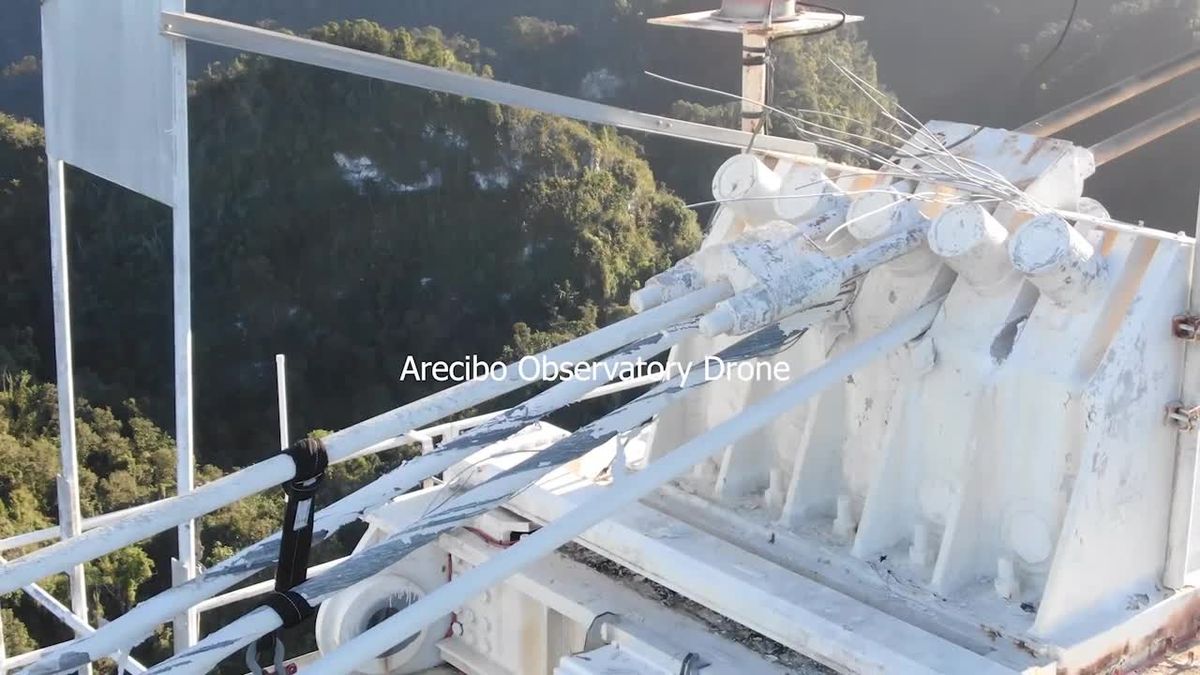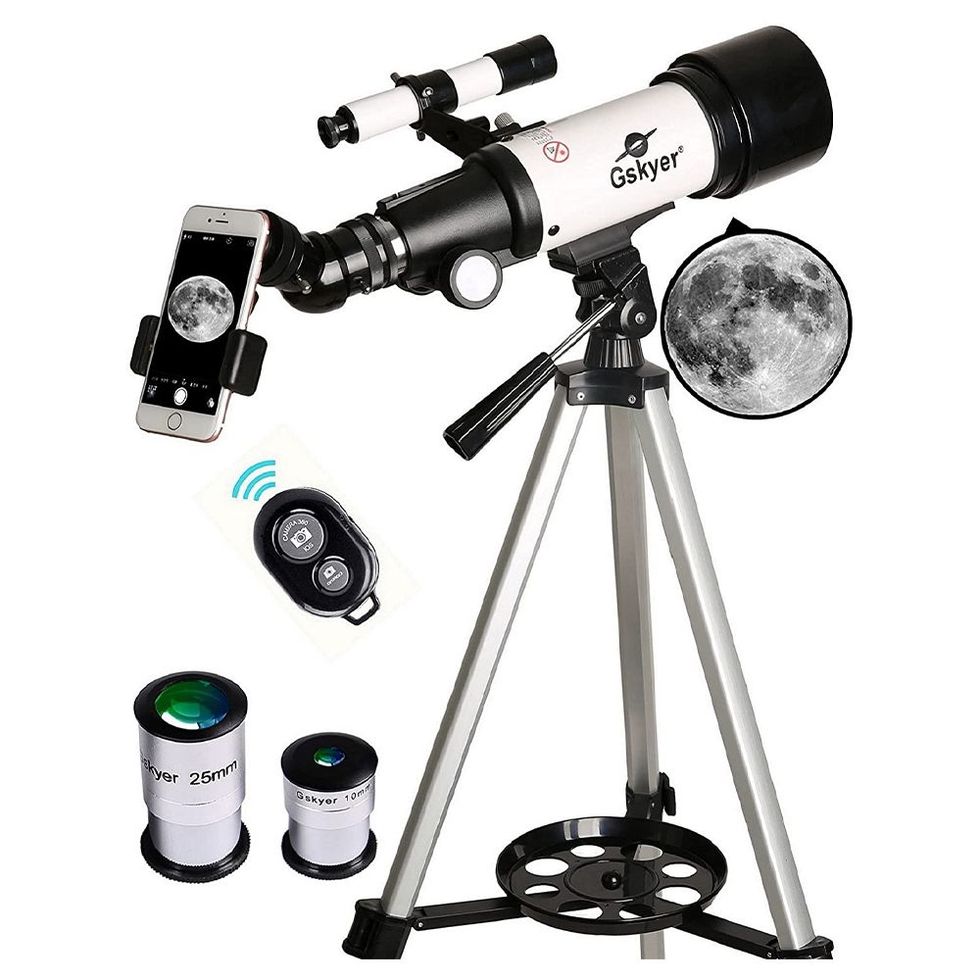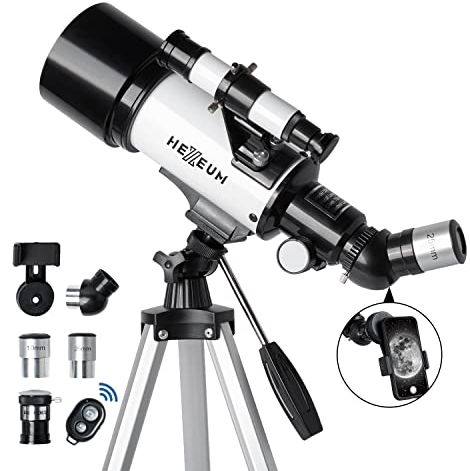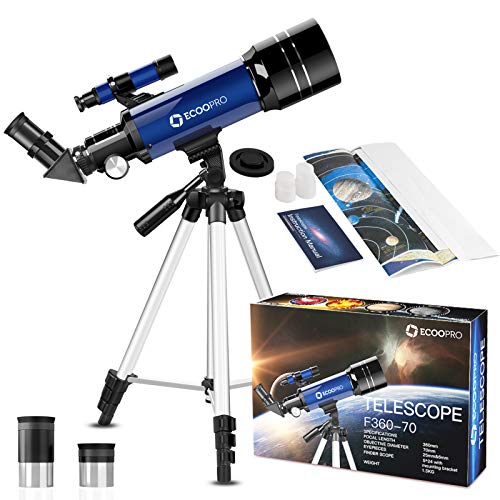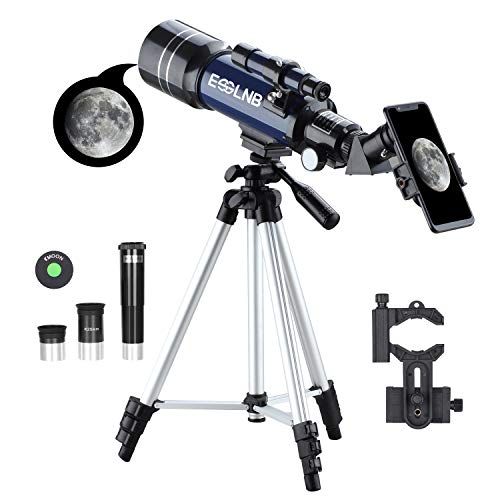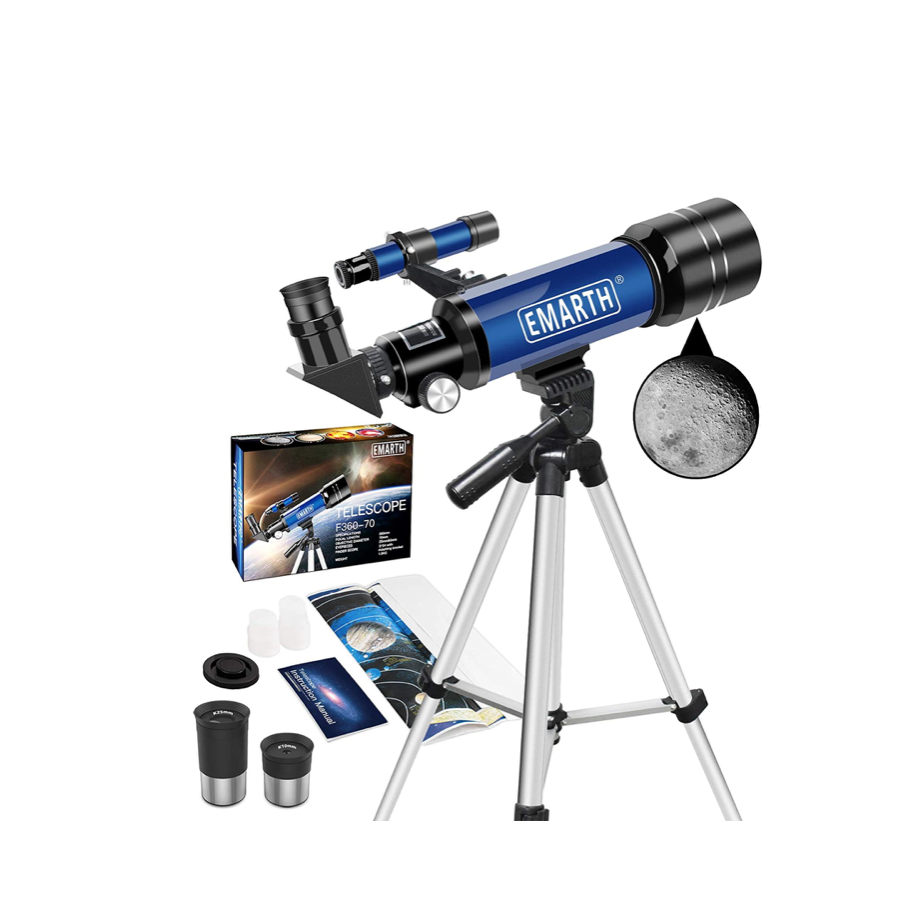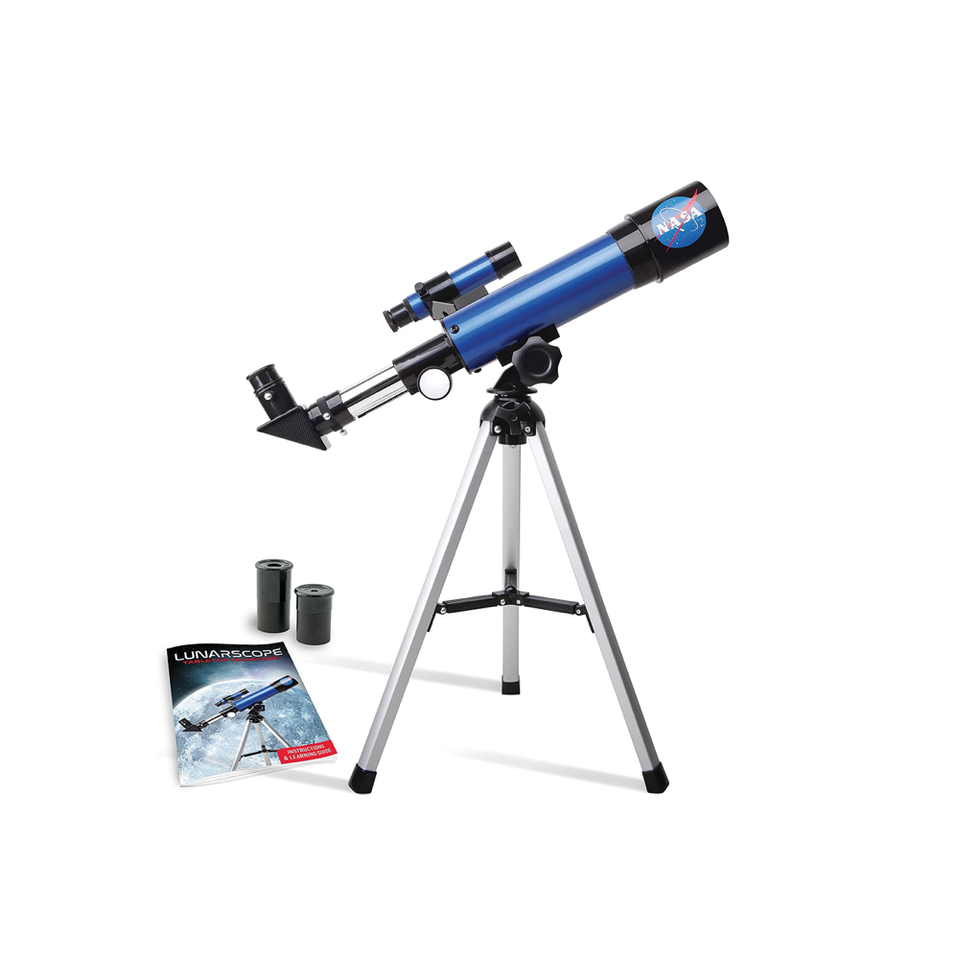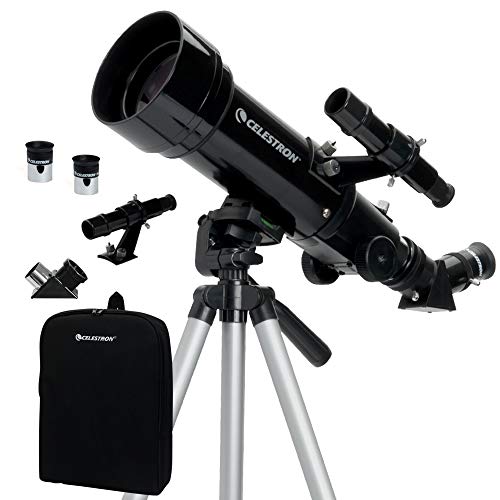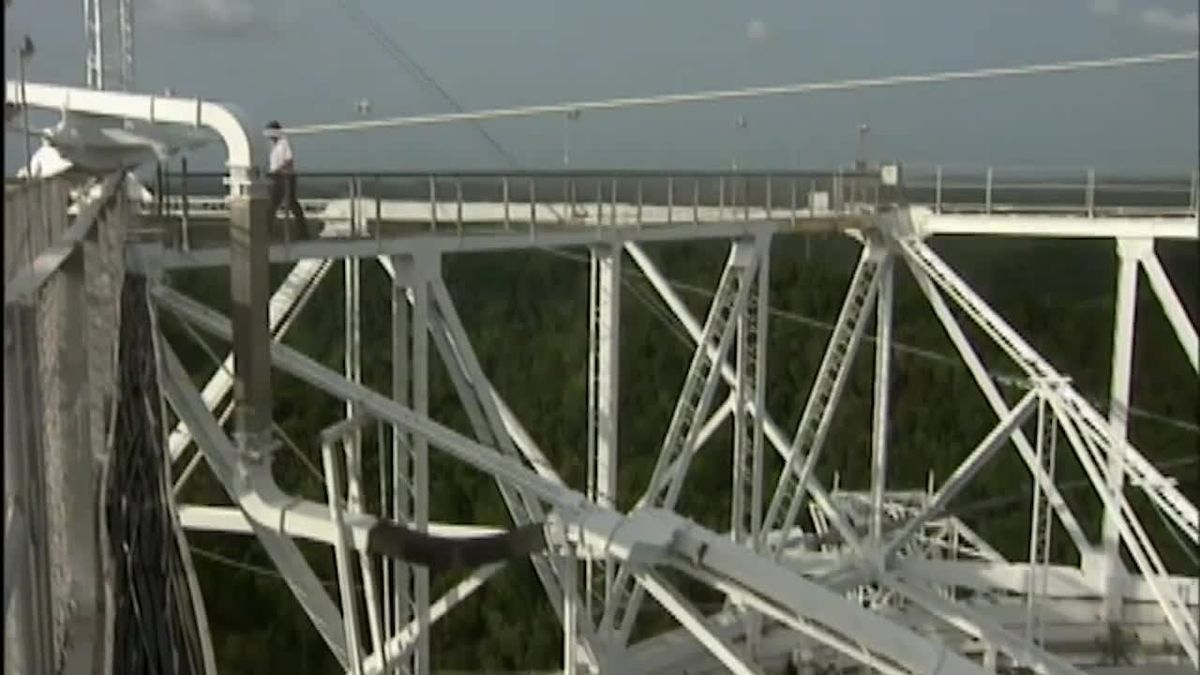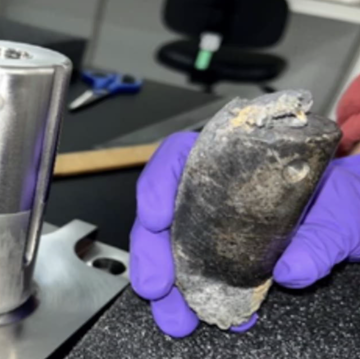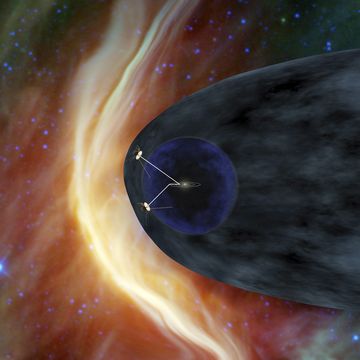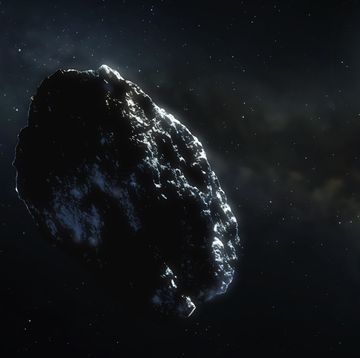- The famed Arecibo Observatory, featured in the films Contact and Goldeneye, gave way earlier this week after its support cables snapped.
- The National Science Foundation, which ran the Puerto Rico-based radio observatory, released dramatic drone footage of the collapse.
- The telescope operated for almost 60 years, scanning the skies for asteroids and alien signals and contributing to our understanding of the universe.
The National Science Foundation (NSF) has released tragic drone footage of the collapse of the famed Arecibo Observatory, which fell this week after 57 years of service.
📡You love badass space stuff. So do we. Let's explore the universe together.
The observatory—made famous by films like Contact and the James Bond flick Goldeneye—probed the distant reaches of the universe for signs of extraterrestrial life, scanned the skies for fast radio bursts, and tracked marauding asteroids zipping through our solar system. It's a devastating loss for research in Puerto Rico, the scientific community, and even humanity as a whole.
The footage, which you can watch above, shows the instant when the telescope's support cables snapped, sending the 900-ton instrument platform tumbling into the 1,000-foot-wide dish below. The tops of the three towers that supported the platform also gave way, pushing a flood of debris down across the dish and several adjacent facilities. Fortunately, no one was injured.
The observatory, nestled in the verdant hills of Arecibo, Puerto Rico, was managed jointly by the National Science Foundation (NSF) and the University of Central Florida. It opened in 1963 and has made significant contributions in the years since. In addition to the 1,000-foot dish, the observatory is home to a 12-foot radio telescope, a LIDAR facility, and an educational center.
“We knew this was a possibility, but it is still heartbreaking to see,” Elizabeth Klonoff, UCF’s vice president for research, said in a December 1 statement. “Safety of personnel is our number one priority. We already have engineers on site to help assess the damage and determine the stability and safety of the remaining structure. We will continue to work with the NSF and other stakeholders to find ways to support the science mission at Arecibo.”
The first sign of trouble came in August, when an auxiliary cable—one of 18 that held the instrument platform in place—snapped and tore through the dish 500 feet below, resulting in significant damage. An assessment at the time revealed that as long as the remaining cables were intact, the dish could be fixed. The Arecibo staff promptly ordered a replacement cable and began rehabbing the facility.
But then, on November 19, NSF announced that yet another cable had ruptured weeks earlier and that it would move to decommission the iconic telescope. Later observations revealed that additional cables had broken under the increasing pressure. The agency said it would be too dangerous to rebuild the facility. Scientists around the world took to social media to mourn the iconic telescope and to advocate for its rehabilitation.
In a press conference this morning, NSF officials said it's just too early to discuss rebuilding the iconic radio telescope.
“With regards to replacement, NSF has a very well defined process for funding and constructing large scale infrastructure—including telescopes,” said Ralph Gaume, director of NSF’s division of astronomical sciences, per reporting from The Verge. “It’s a multi-year process that involves congressional appropriations, and the assessment and needs of the scientific community."
The Best Telescopes for Stargazing
The loss of the observatory will undoubtedly leave a lasting impact on the tight-knit research community in Puerto Rico, but it could have dire consequences our planet, too. Arecibo Observatory was one of just a few tools that astronomers could use to get a close look at potentially hazardous objects that could threaten Earth.
Astronomers have long used planetary radar systems like Arecibo to puzzle out the composition of hazardous objects—are they one solid hunk of rock, or composed of a massive pile of rubble?—as well as whether or not they're part of a binary asteroid system and have a companion object orbiting them. These observations help astronomers and other scientists tasked with protecting our planet develop a plan even quicker. The more we know sooner, the better.
Now that Arecibo is out of commission, there are fewer resources available to make these observations, Space.com reports. In California, the Goldstone Deep Space Communications Center, which is run by NASA's Jet Propulsion Laboratory and is an integral part of the agency's Deep Space Network, is the sole radar transmitter with this capability.
It's the end of an era in more ways than one. From unraveling the mysteries behind the fast radio bursts that ricochet through the universe to listening for the sounds of distant civilizations that may lurk throughout our galaxy, Arecibo has made a number of critical contributions over the years and, in some cases, has completely overhauled our view of the cosmos.
The telescope made monumental discoveries closer to home, too. Arecibo spied ice deposits near the North Pole of Mercury and mapped the surface of our cloud-covered neighbor, Venus, in great detail.
With Arecibo in ruins, the universe feels smaller.
Jennifer Leman is a science journalist and senior features editor at Popular Mechanics, Runner's World, and Bicycling. A graduate of the Science Communication Program at UC Santa Cruz, her work has appeared in The Atlantic, Scientific American, Science News and Nature. Her favorite stories illuminate Earth's many wonders and hazards.
